Last year, I joined the Fiber Business Collective, where I met all sorts of fascinating people working in the fiber arts. One very special member of our group is Teresa Runnet, whose thoughtfulness and love of handknit socks instantly made her feel like a kindred spirit.
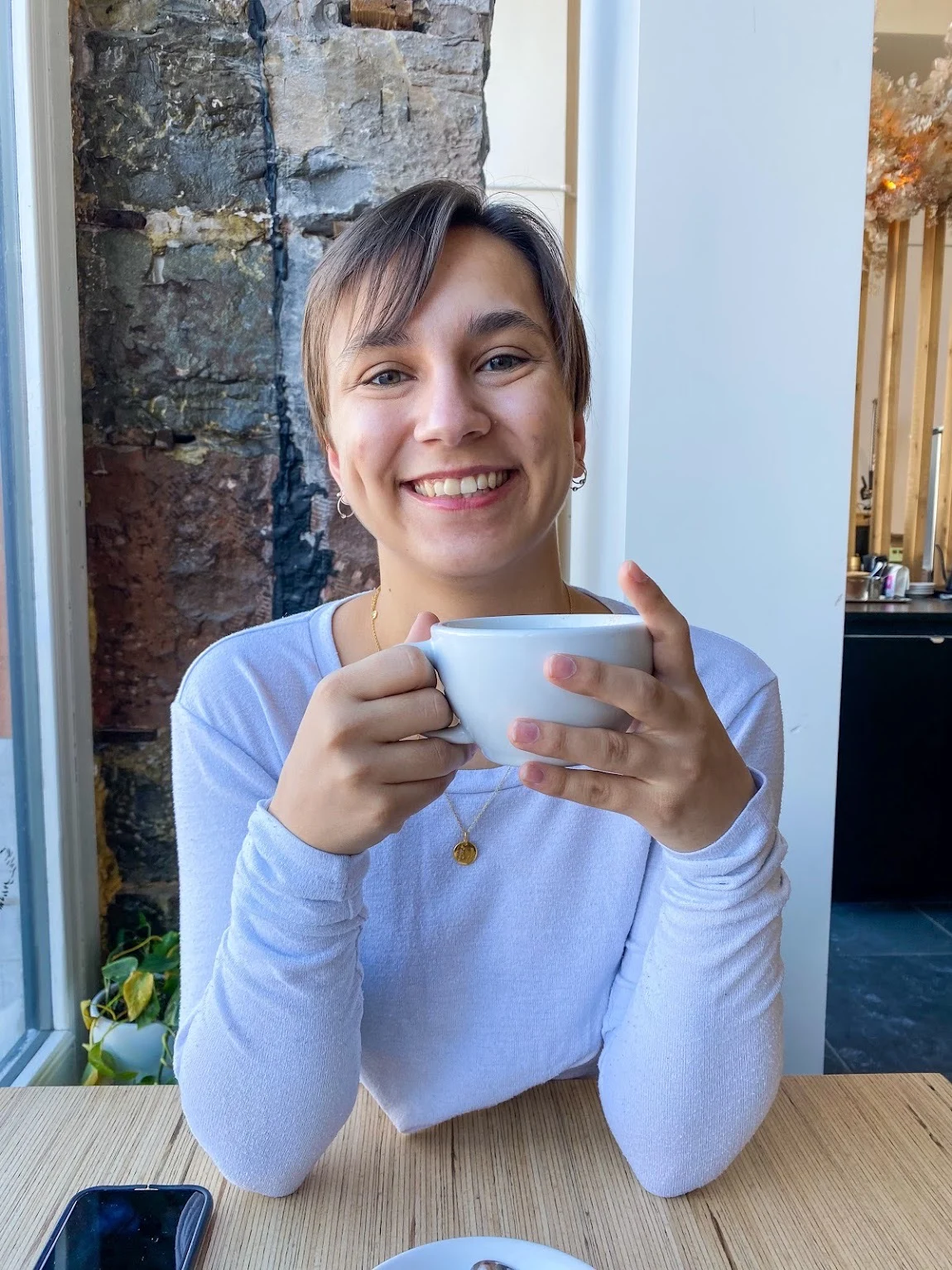
And so, when I thought of people I wanted to interview for this blog post series, I knew she was high on the list! Thankfully, she was able to take the time to answer some questions, and I think you’ll enjoy her responses as much as I did.
Right then, let’s not belabor things too much here. On to the interview. I’m so excited for you to get to know Teresa, too.
What first drew you to fiber arts?
This answer is a bit of a silly one. For many years before I learned to knit myself, any time someone complained that they were bored or didn’t have a hobby I told them they should learn how to knit! I don’t really know why, it was just a random thing that I thought of one day and kept saying.
Then, while I was sick and waiting for surgery, I found myself unable to participate in my regular hobbies. So I thought to myself, mostly kidding, “maybe I should learn how to knit.”
And then I did, and discovered that knitting was actually a huge community, full of many different styles and artistries. It was like I’d accidentally stumbled into a whole nother world.
What is the most important lesson you’ve learned from fiber arts?
The most important lesson I’ve learned is that it’s okay to mess up.
I come from a background of classical music, and any musician can tell you that when you perform or audition, it doesn’t matter how many times you nailed something in the practice room—if you screw up on stage, that’s what people will remember. To be honest, it’s a bit anxiety inducing.
But with knitting, you can always rip back and start again. It’s very comforting for me to know that if I mess up, I can fix it without anyone noticing.
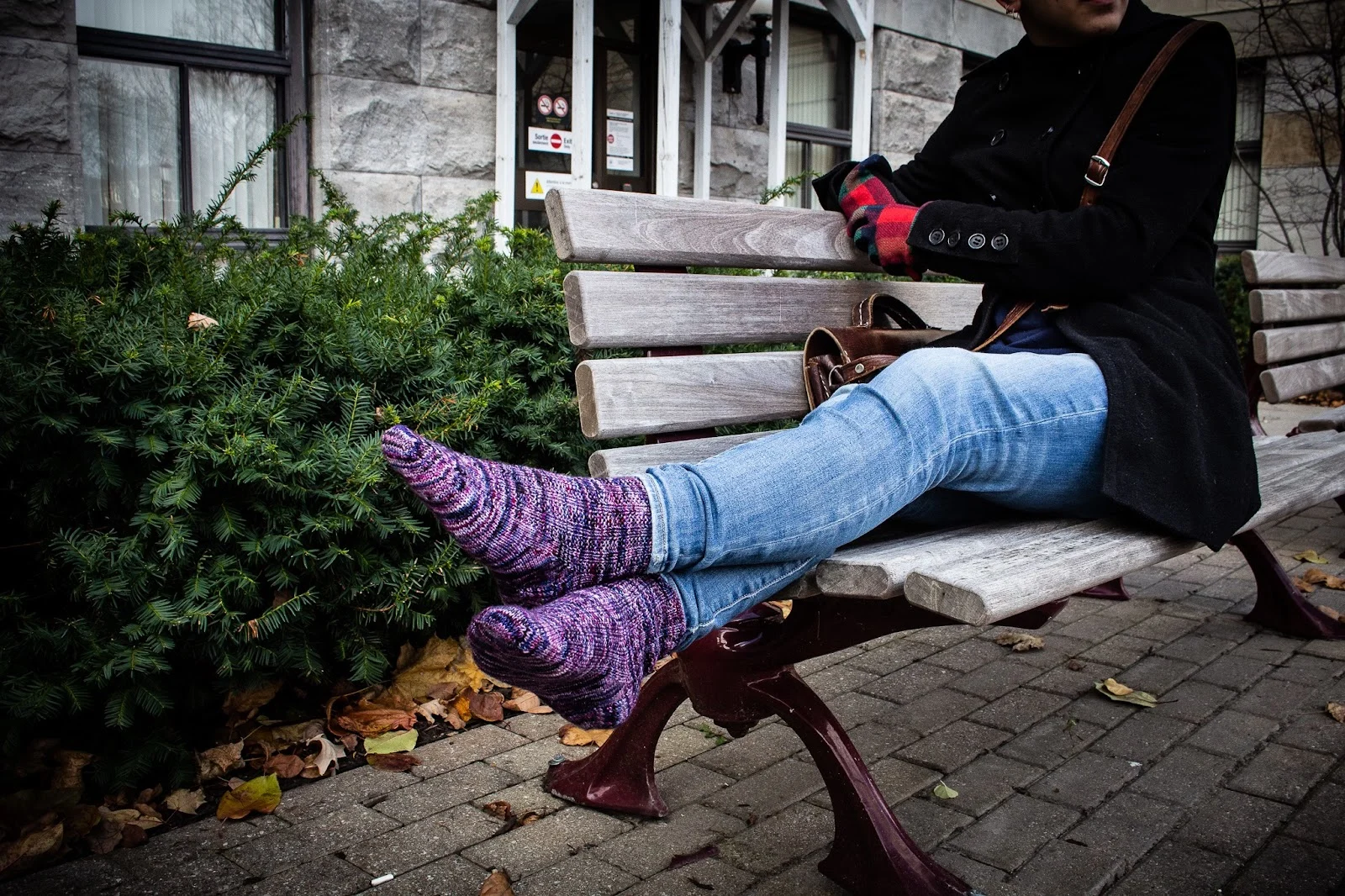
Your previous experiences with perfectionism really resonate! I’ve written about how knitting has helped me overcome some of my own perfectionist training, too. Why do you think so many of us get caught in the perfectionism trap, and why does knitting seem to help so many of us pull out of it?
I think the way our society is structured makes it really easy to end up as a perfectionist. We’re graded in school, judged in job interviews, and then our performance is reviewed at the jobs we were judged to get.
It can be upsetting to feel like you’ve tried your best, but it still wasn’t good enough. I think a lot of people, myself included, subconsciously decide that the only way to guarantee that they won’t feel bad about their work is to do it perfectly.
Knitting allows a bit of an escape from that. No one but the maker needs to see it if they don’t want to share with others, and regardless of if a cable was turned the wrong way or if there’s gaps at the edge of the heel flap, there’s still a finished object at the end, and you get to wear something you made yourself!
Plus, if a mistake really bothers you, you can go back and fix it. It’s a good way to learn to live with little mistakes, and for me, I started to realize that the little mistakes don’t matter as much as I thought they did.
How do you hope your work will affect others?
I hope that people find a lot of excitement and joy in my designs. The world is a bit scary right now for everyone, and I want my patterns to be a reminder that good things are still out there.
Even if we don’t have control over some of the bigger things in the world, the little things can still make us happy and make our days better. Ultimately, I want people to be able to put on a pair of socks in the morning that will make them smile before they go out to face the world.
When do you feel most inspired to work?
Most of my designs feature places or moments in time, but the inspiring part is the feeling that those places and moments trigger. When I stand at the edge of a huge body of water, or I feel the first warmth in the spring breeze after a long cold winter, there’s a special little glow that comes up for me.
That’s when I usually decide I want to capture that feeling and turn it into a pattern.
Then I start to look at design elements that I think will capture that moment- are cables more suited to this idea, or should it be colourwork? Should this be a long sock or an ankle sock?
Once I’ve nailed down the basics, I start to keep my eye out for yarn that I think best fits the feeling. I follow lots of dyers on Instagram, and when the right one shows up, I know it. The design often changes a bit from conception to completion, of course, but it’s the initial spark of emotion that’s the most inspiring for me.
How do you cultivate creativity in your daily life?
I’ve often been told I’m a study in contrasts, and it’s very true. I have a tendency to bounce between bits of everything when it catches my interest.
If I’m feeling a bit creatively burnt out, I switch to a different activity for a bit. I like to cook, read, hike, draw, write, swim, watch movies, and play music in addition to knitting.
Some people warn me that I can’t be good at everything, but I think the variety is what helps keep my creative mind fresh. Often one piece of art will end up sparking an idea in another.
Where do you like to do your work? Why do you like that spot?
I mostly like to work at home, with an audiobook or TV show in the background. I’m easily distracted, so while working in a coffee shop or a park always seemed like fun in theory, in practice I don’t get much work done. I spend a lot of time talking out loud to myself, too, so maybe it’s a good thing people aren’t around to see that.
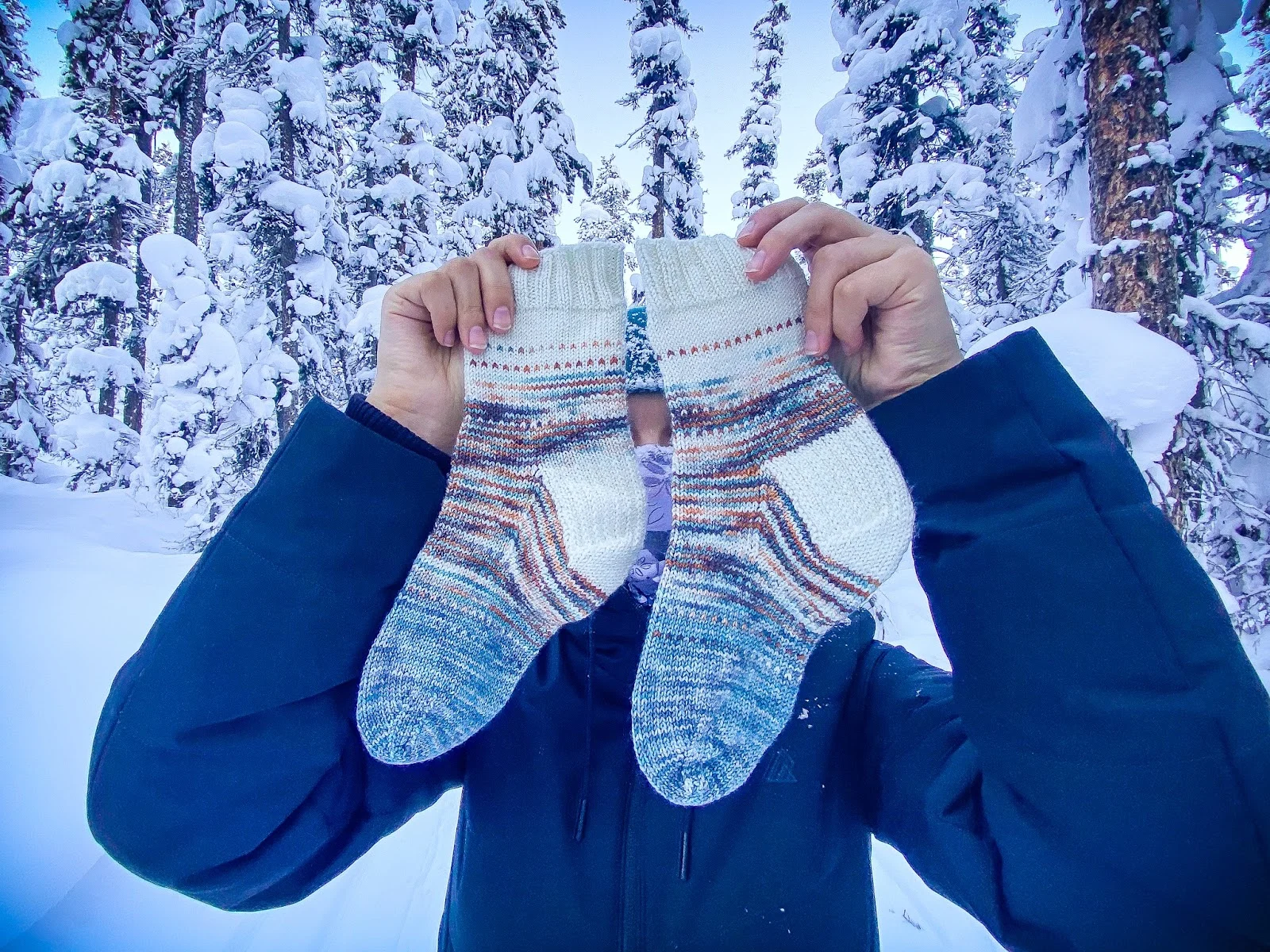
Who has helped you become a better fiber artist? How have they helped you?
I’m a huge lurker online, so most of the people who’ve helped me have no idea they’ve done so.
I first learned how to knit through videos and blogs from Handy Little Me, a blogger from Scotland. Once I started designing, I sought out designers on Instagram who seemed to know what they were doing. People like Jen Parroccini, Emma from Bloom & Create, and, believe it or not, you!
When people bring up common issues in patterns, I look at my own patterns and see how I can do better
Why did you decide to build a business in fiber arts?
I always knew it would be hard for me to work an office job. I don’t really work well for other people. That’s not to say I’m not a good employee, most of the people I’ve worked for really liked me. I just personally find a standard 9-5 job very harsh on me.
My energy ebbs and flows unexpectedly, and I tend to either work a lot or not at all. If I worked for someone else, I think they’d eventually find it frustrating and I’d find it draining.
But if I work for myself, I get to decide when I work and how much I work. When I first started designing, I figured it would be something I would do on the side. But once I got deeper into the fibre arts world and realized that some people do this as a career, I knew it was exactly what I wanted.
Creative output, community connection, fiddly little pattern bits for the part of my brain that likes problem solving, and I get to decide my schedule. It seemed like a dream come true.
I’ve noticed quite a few of us who do this work are also self-described “not great at office life” types. How do you think we can replicate some of the good things about office work (community, support, teamwork) while leaving behind the bad stuff?
Festivals and local yarn stores are a good way to find other knitters in the real world, but I find online spaces have helped me find people in the community to connect with. The internet really helps to create that sense of belonging and shared interest that an office job would usually bring. Now, we have social media, Discord, Slack groups, collectives, Facebook groups, blogs, email, Zoom and FaceTime, Reddit… the list goes on and on.
It’s much easier now to find people we connect with and share a passion with. Personally, I’ve only ever shopped in person at a yarn store twice, mostly because my local store is on the other side of the city, and I’ve only been to one yarn festival.
Despite that, I definitely feel like I’m part of the community, and I have a solid network of other knitters to chat with.
How do your previous experiences show up in your work?
I spent a lot of time out in nature as a kid. I grew up near the Rocky Mountains in Alberta, so most vacation time spent as a family was out hiking, skiing, and swimming.
As a kid, I absolutely adored nature. There was something magical about it, and I was a super curious child, so every little detail was amazing to me.
Now, a lot of the moments that cause that special glowing feeling I mentioned are things I loved as a kid. I live in a city at the moment, on the other side of the country from where I grew up, so I think part of that feeling is nostalgia.
While I do try to design things that I think my audience will love, a few designs are just for me, to take those memories with me when I’m missing home.
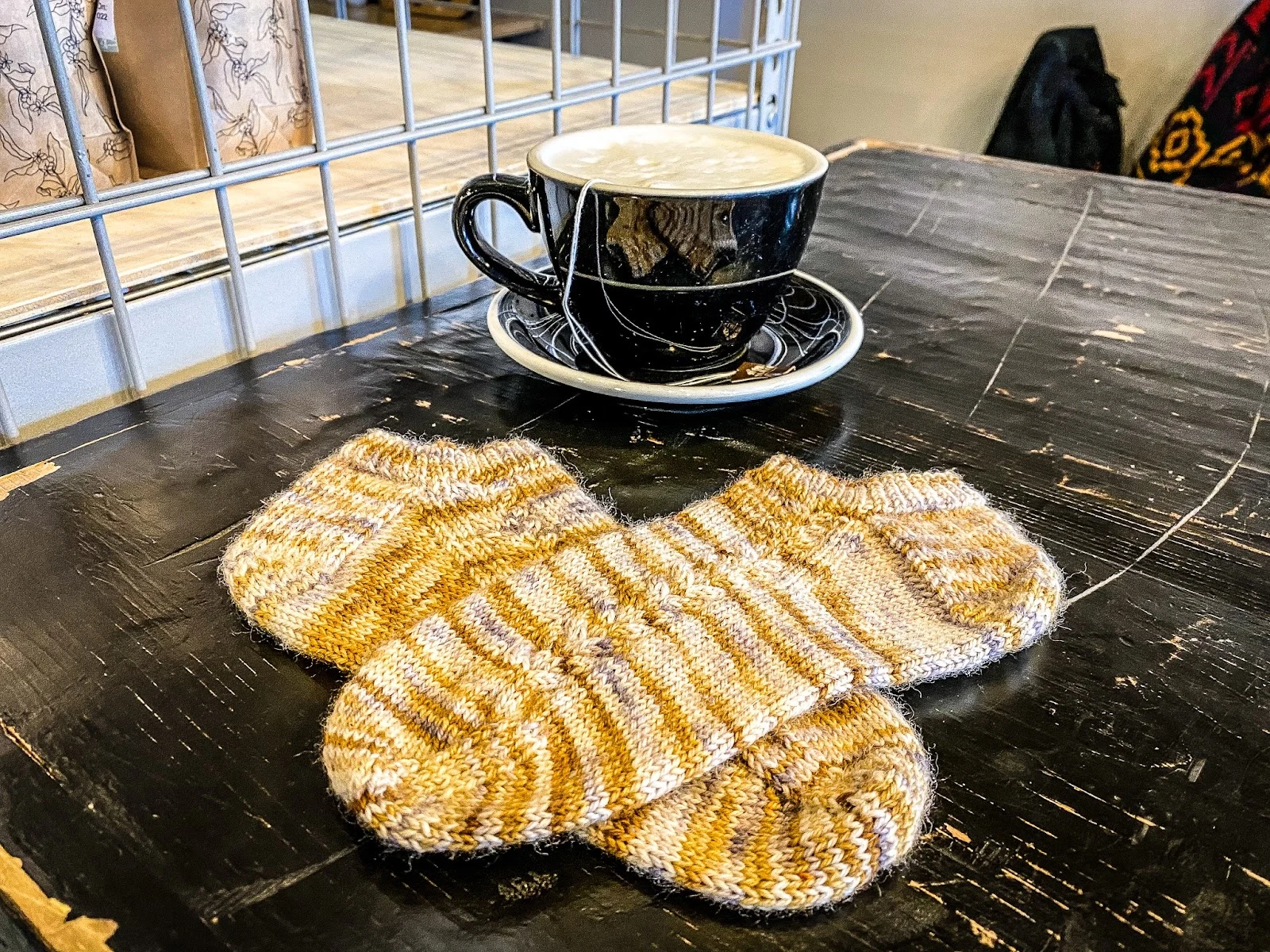
Your designs focus on sock patterns. What drew you to socks in particular?
I always liked socks, even as a kid. I’m a naturally shy person, so being loud and flashy in my clothing choices just makes me nervous. At the same time, I love fashion, and I love the way clothing can change my mood.
Socks were the perfect balance. I can hide them in my shoes, but I still get the feeling of comfort, coziness, or confidence all to myself. Even if no one else ever sees them, I know they’re there.
I also learned to knit when I was sick and low on energy. Knitting a full sweater or blanket was something I didn’t have the capacity for, so socks were the perfect little projects. Even now, after my surgery, socks remain my favourite thing to knit.
I love the portability of sock projects, too! What are some of the more unusual places you’ve taken your sock projects?
I’m pretty much always carrying a WIP with me. I like to keep my hands busy, since I don’t sit still very well. I travel to see my family a lot, so there’s been lots of knitting on airplanes or trains, but I think the weirdest place I’ve ever knit was at a dentist office while waiting for the freezing to kick in.
It’s so fun to puzzle over the different components of sock patterns. Do you have a favorite heel or toe? Which do you prefer, and why do you like them?
I use the very standard heel flap and gusset in my patterns, which is a bit boring, but I use it for a very particular reason.
I’ve found that most beginning sock knitters learn to knit with a heel flap and gusset, and almost all sock knitters are familiar with it. I tailor most of my patterns towards sock knitters who have already knit a few socks and are looking for something beautiful to knit that’s not going to be so complicated they’ll give up.
Of course, for some designs, the heel flap and gusset isn’t the best choice. I’ve got a couple patterns planned out that will need a different heel, but I haven’t published any yet.
I also know that more advanced sock knitters aren’t afraid to sub in their preferred heel or toe, so I stick to the basic and familiar so people can make modifications where they choose.
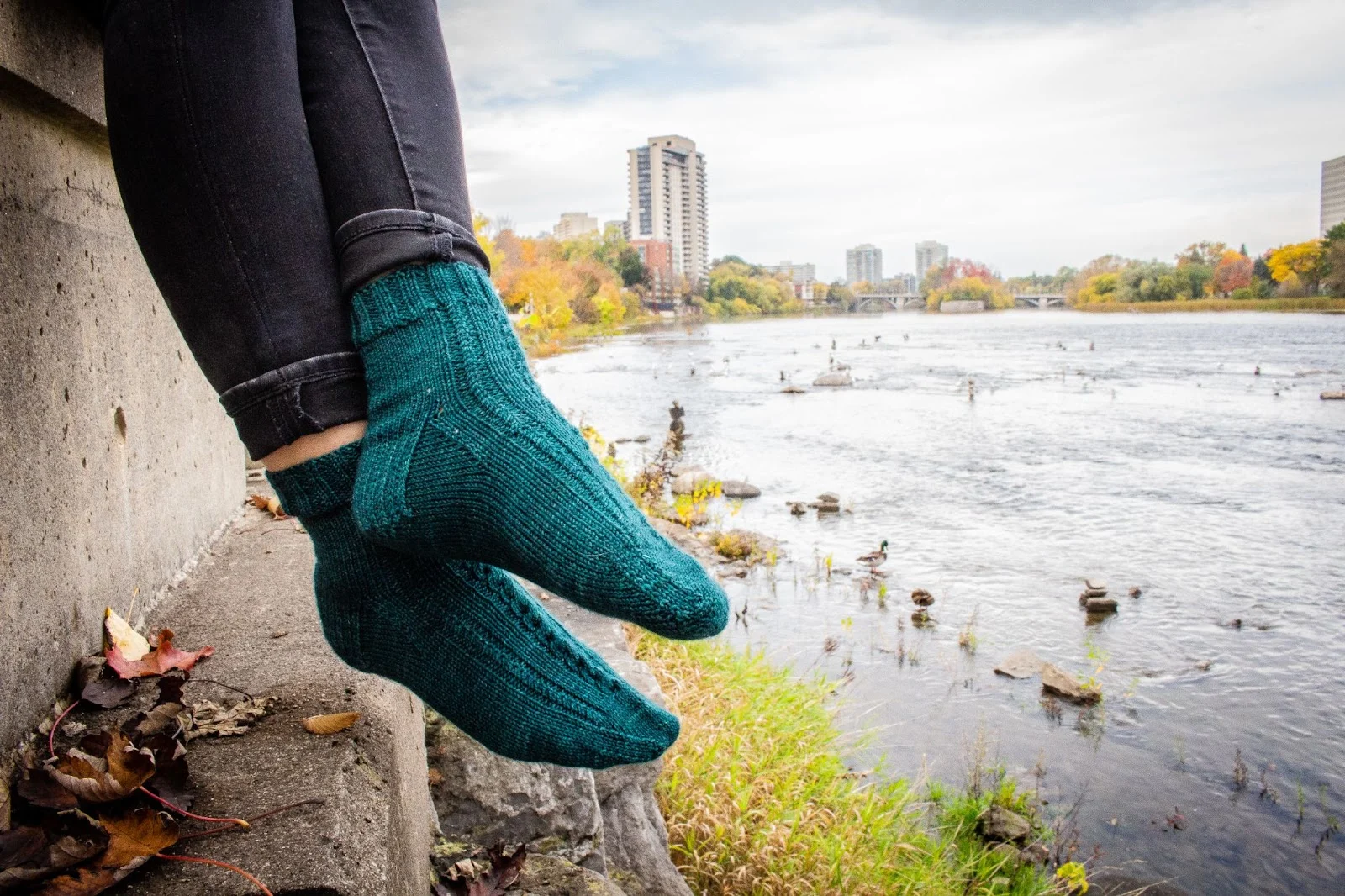
I love your focus on how whimsical socks can be worn anywhere, even with work clothes. How did you zero in on this factor as part of your design aesthetic?
I spent a lot of time alone in the hospital while waiting for the surgery that would cure the illness I had when I was sick. I don’t like hospitals, they make me very anxious, and I wasn’t able to bring anyone with me.
Instead, I’d wear clothing that was comforting. Big sweaters, comfy socks, anything that could make the experience better.
When I started designing, I was almost subconsciously designing things I’d like to wear to make me happy. Socks that reminded me of home when I got homesick, like the Glaciers socks, or socks that reminded me of my favourite parts of the day, like the London Fog socks.
Anastasia [Williams, founder of the Fiber Business Collective] helped me to zero in on this concept and draw it into fully fledged idea. Lots of people aren’t visiting the hospital on a frequent basis, but instead have a job they don’t really like, or exams that they’re nervous about, or social events they’d rather not attend. I hope that wearing my sock designs can help people enjoy the tough parts of life a little bit more, by bringing a little bit of home or a little bit of comfort with them.
_____________________
Don’t miss out on Teresa’s upcoming designs! You can find her on Instagram and on her website. You can also sign up for her newsletter to make sure you know as soon as she drops a new sock pattern.